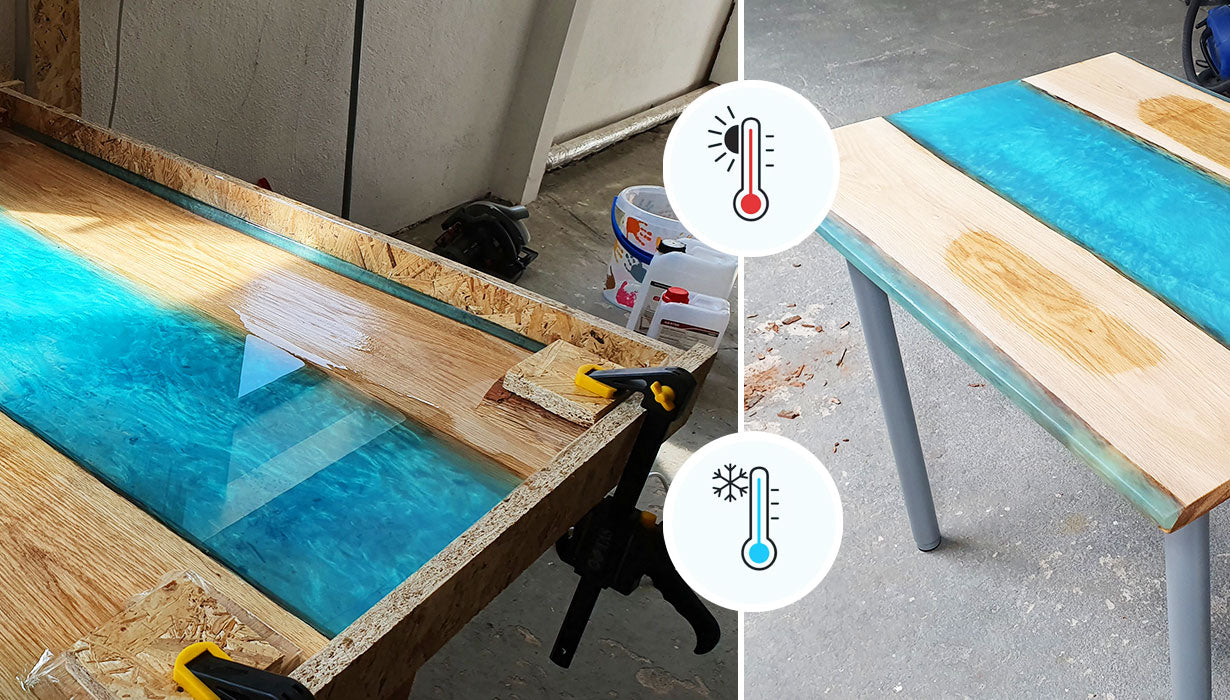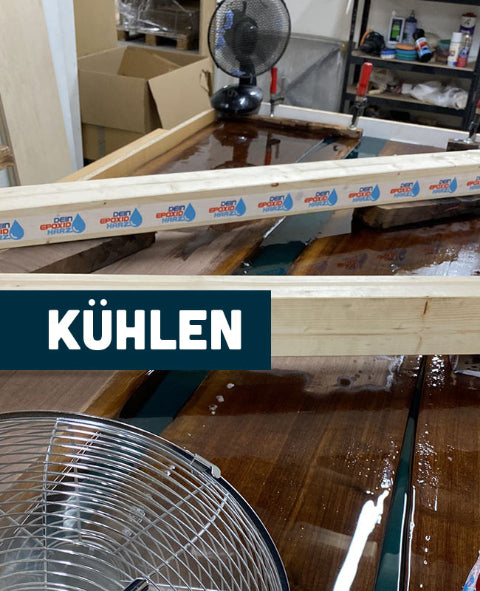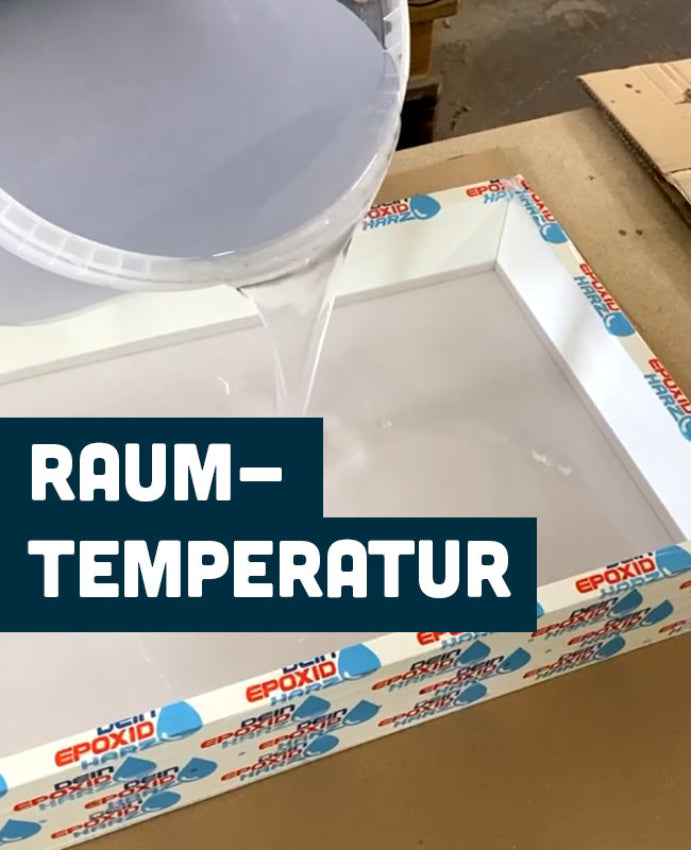

🐇 🧺 🎁 Mengenrabatte auf alle Farben. Bis zu 20% sparen.
--
Tage--
Stunden--
Min--
Sek
When working with epoxy resin, it is especially important to consider the effects of extreme temperatures , as both high and low temperatures can affect the processing and curing of the resin. Here are some tried and tested tips and tricks for working successfully with epoxy in different starting situations.
When working at high temperatures, it is advisable to choose a cool and well-ventilated work area and to reduce mixing and processing times to avoid unwanted blistering or cracking. Also avoid direct sunlight to prevent unwanted discoloration. At low temperatures, it is advisable to warm the resin before mixing and bring the work area to the optimal processing temperature. Longer curing times should be planned to compensate for the slower reaction rate.
For best results, it is important to test the resin at different temperatures. You should also look into special formulations of epoxy resin suitable for extreme temperatures to ensure high quality results regardless of the ambient temperatures.
Generally, room temperatures between 18°C and 20°C are very suitable for pouring epoxy resin. If you want to use epoxy resin that has been stored in very cold conditions, it is advisable to leave it in a suitably warm and/or heated room for a few hours so that the epoxy resin can adjust.

Danger:
If you notice that the resin component is white and flaky, it is crystallized resin. This is a chemical reaction to very cold temperatures and can be reversed using a water bath (approx. 60 min / 60°C). To do this, simply place the closed resin container in the water bath. Then let the resin cool down to regular room temperature.
The same applies to resin stored at a warm temperature. In this case, it is advisable to cool the epoxy resin to the appropriate temperature using a fan or air conditioning.
Please also note that the ambient temperature has a significant influence on the thickness and quantity of the corresponding epoxy resin that can be poured. Differences of ±5°C already have a major impact.
For comparison: While the D600 thick-film resin has the optimal processing time at 18°C and can be poured to a height of 100 mm with a total quantity of a maximum of 11.5 kg, the values are reduced to 2.89 kg and 25 mm at 23°C. You can find further information on this in the instructions included with our epoxy resin products.
Tip: For better handling and temperature measurement, we recommend using a thermometer. The infrared thermometer from our shop is very suitable for this purpose.
Conclusion:
Working with epoxy resin in extreme temperatures requires adapted techniques and careful preparation. In both high and low temperatures, it is important to control and adjust the work area accordingly to achieve optimal results. By carefully planning and paying attention to specific requirements, artists and crafters can overcome the challenges of extreme temperatures and successfully complete their creative epoxy resin projects.